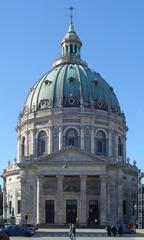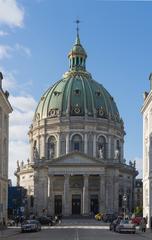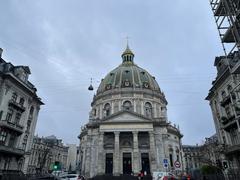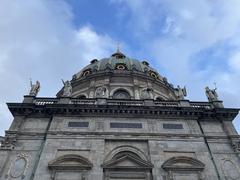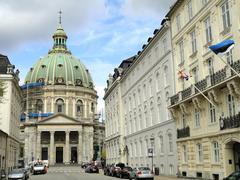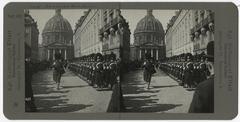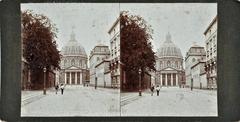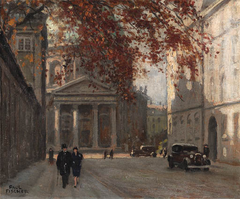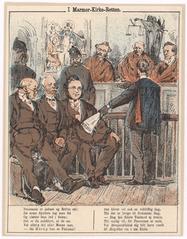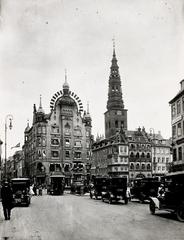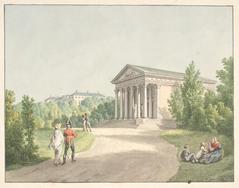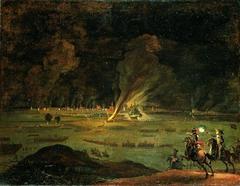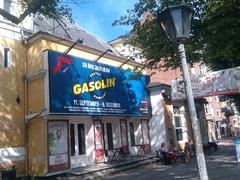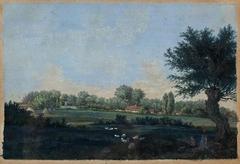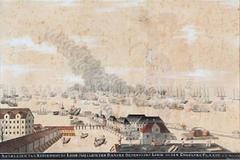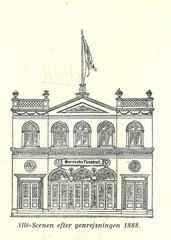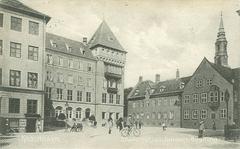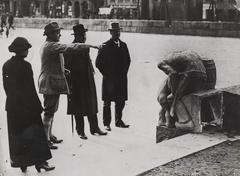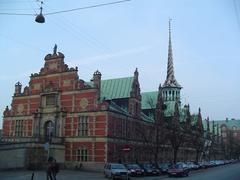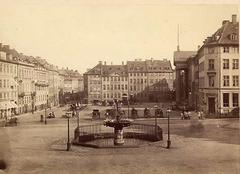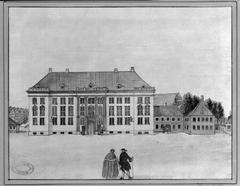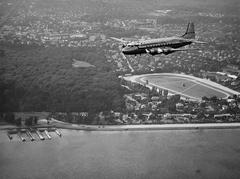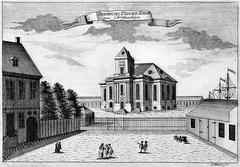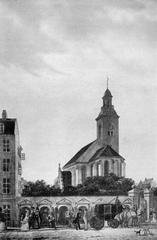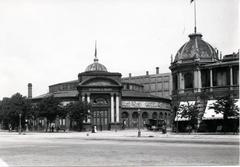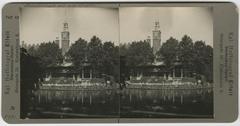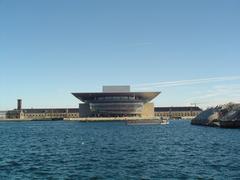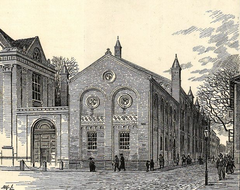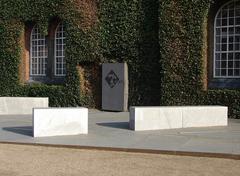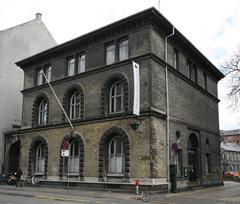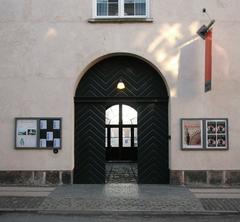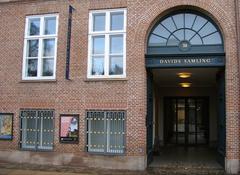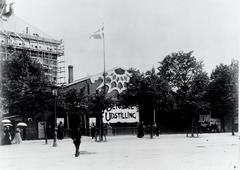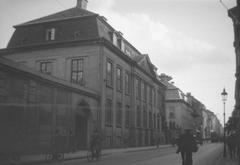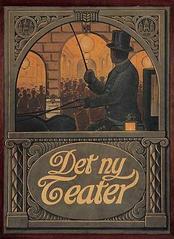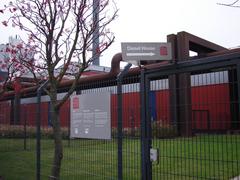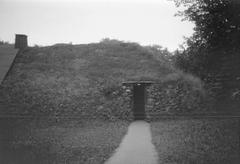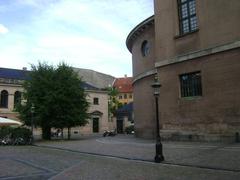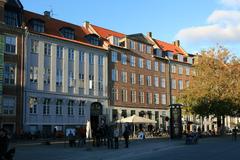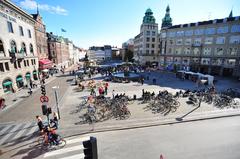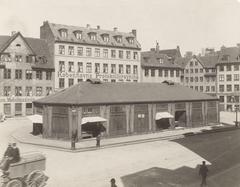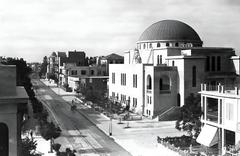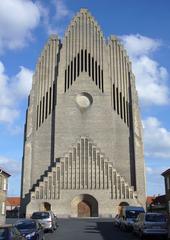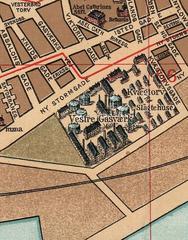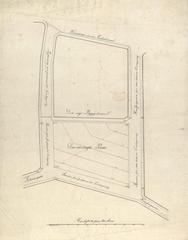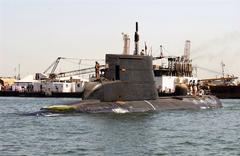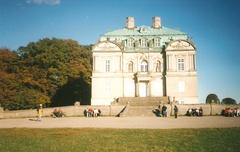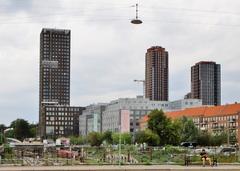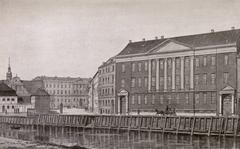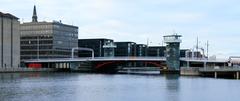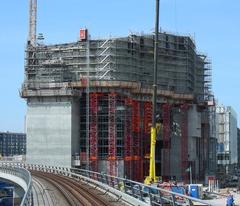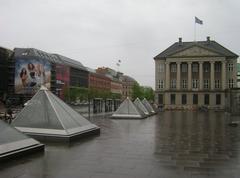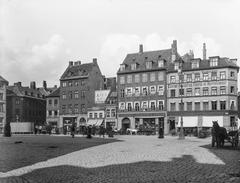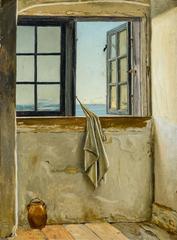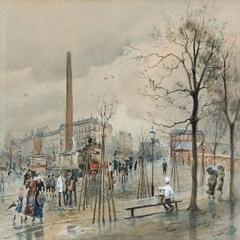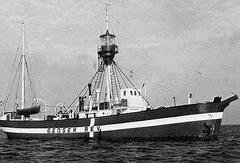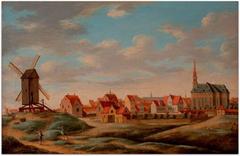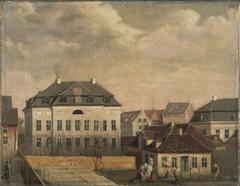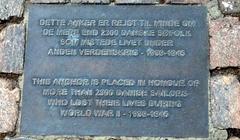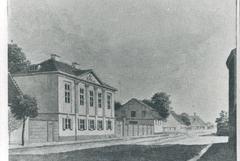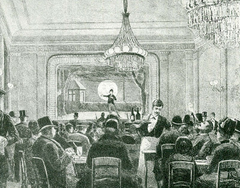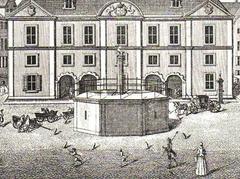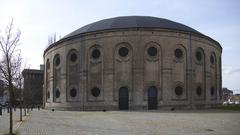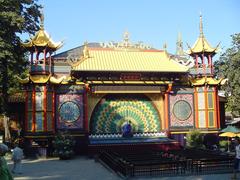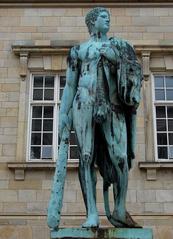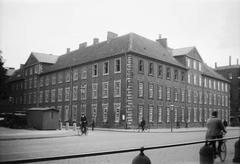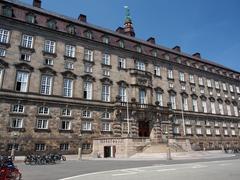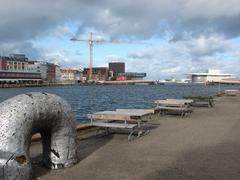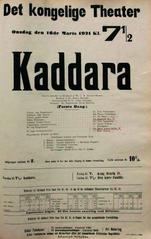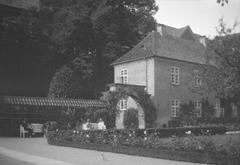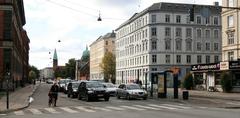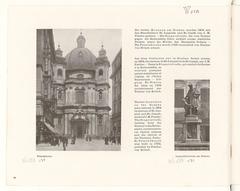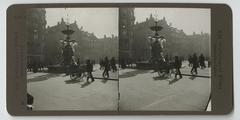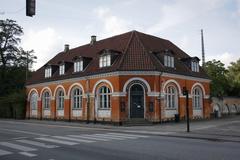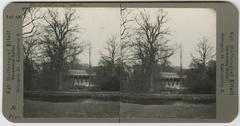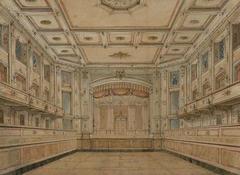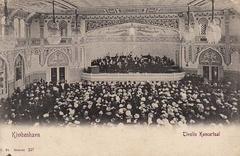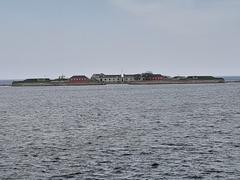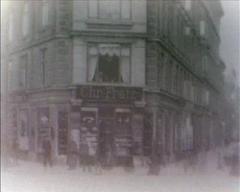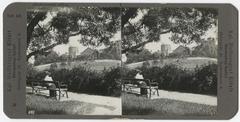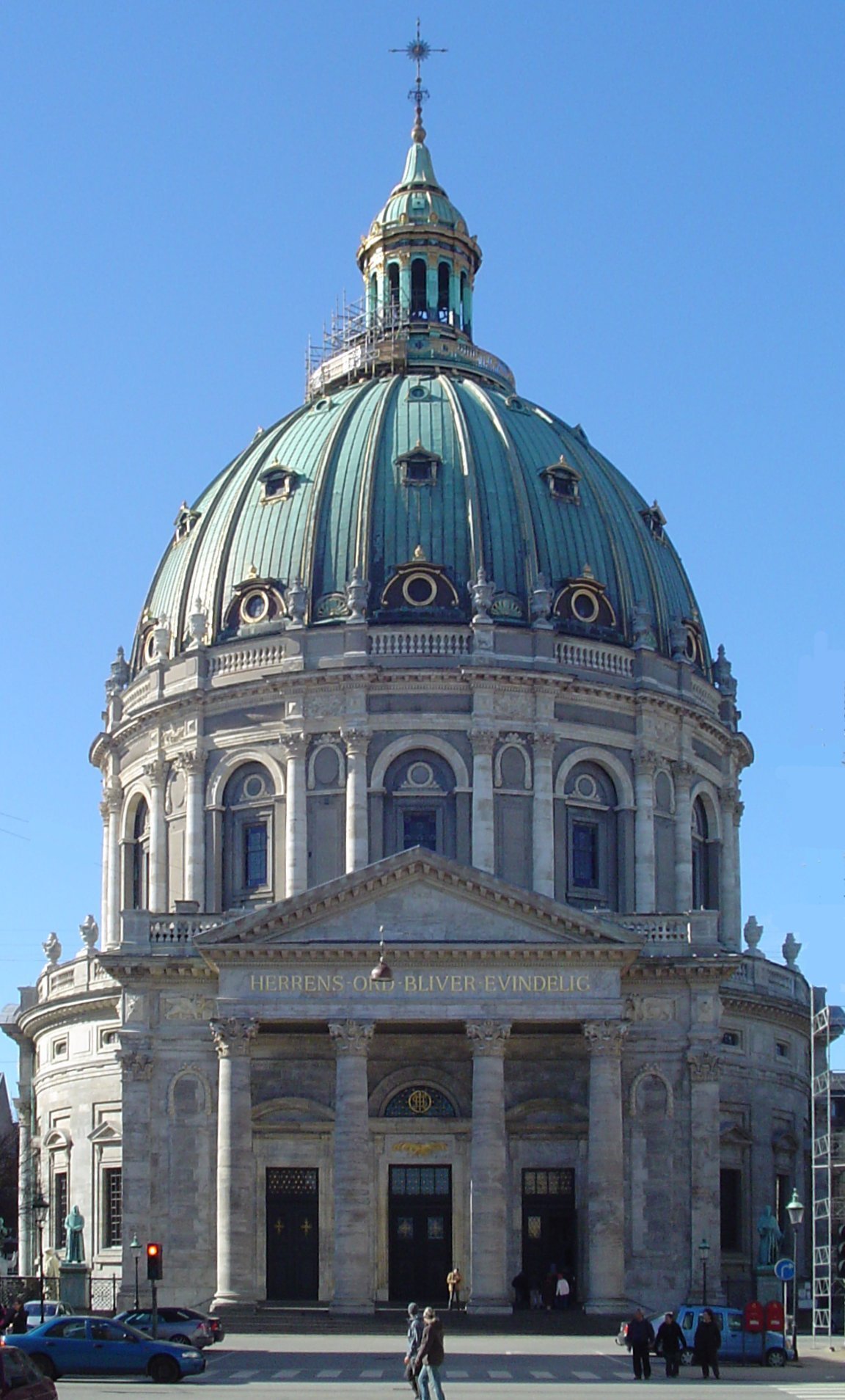
Marmorkirken Visiting Hours, Tickets, and Historical Sites in Copenhagen
Date: 18/07/2024
Introduction to Marmorkirken
Marmorkirken, also known as the Marble Church, is one of Copenhagen’s most iconic landmarks, celebrated for its architectural splendor and historical significance. Located in the heart of Denmark’s capital, this monumental church is a testament to the city’s rich cultural and architectural heritage. The church’s history dates back to the 18th century when King Frederik V envisioned a grand structure to commemorate the 300th anniversary of the first coronation of a Danish king from the Oldenburg dynasty. Despite numerous challenges and delays, including financial constraints and changes in architectural vision, Marmorkirken was finally completed in the late 19th century under the guidance of architect Ferdinand Meldahl. The church’s design, featuring a massive dome inspired by St. Peter’s Basilica in Rome, incorporates elements of Romanesque, Byzantine, and late Baroque architecture, making it a unique blend of various styles. Today, Marmorkirken stands as a symbol of perseverance, architectural ingenuity, and religious significance, attracting visitors from around the world. This guide provides comprehensive information on the church’s history, visitor details, travel tips, nearby attractions, and more to ensure a fulfilling visit to this architectural marvel (source).
Table of Contents
- [Introduction](#introductionintroduction-to-marmorkirken)
- [Historical Background and Architectural Evolution](#historical-background-and-architectural-evolutionhistorical-background-and-architectural-evolution)
- [The Original Vision - A Grandiose Start](#the-original-vision---a-grandiose-startthe-original-vision---a-grandiose-start)
- [Challenges and Delays - A Century of Stalemate](#challenges-and-delays---a-century-of-stalematechallenges-and-delays---a-century-of-stalemate)
- [Revival and Completion - A New Architect, a New Style](#revival-and-completion---a-new-architect-a-new-stylerevival-and-completion---a-new-architect-a-new-style)
- [Marmorkirken Today - A Symbol of Perseverance](#marmorkirken-today---a-symbol-of-perseverancemarmorkirken-today---a-symbol-of-perseverance)
- [Visitor Information](#visitor-informationvisitor-information)
- [Visiting Hours](#visiting-hoursvisiting-hours)
- [Tickets](#ticketstickets)
- [Special Instructions](#special-instructionsspecial-instructions)
- [Travel Tips](#travel-tipstravel-tips)
- [Best Times to Visit](#best-times-to-visitbest-times-to-visit)
- [How to Get There](#how-to-get-therehow-to-get-there)
- [Nearby Attractions](#nearby-attractionsnearby-attractions)
- [Amalienborg Palace](#amalienborg-palaceamalienborg-palace)
- [Nyhavn](#nyhavnnyhavn)
- [Rosenborg Castle](#rosenborg-castlerosenborg-castle)
- [Special Events and Tours](#special-events-and-toursspecial-events-and-tours)
- [Accessibility](#accessibilityaccessibility)
- [FAQ Section](#faq-sectionfaq-section)
- [Conclusion](#conclusionconclusion)
- [Call to Action](#call-to-actioncall-to-action)
- [References and Further Reading](#references-and-further-readingreferences-and-further-reading)
Historical Background and Architectural Evolution
The Original Vision - A Grandiose Start
The story of Marmorkirken begins with King Frederik V, who envisioned a grand monument opposite his new palace, Amalienborg, across the harbor. This vision, conceived in 1740, was intended to celebrate the 300th anniversary of the first coronation of a Danish king from the Oldenburg dynasty. The task of designing this monumental church fell upon the architect Nicolai Eigtved, a leading figure in Danish Rococo architecture. Eigtved’s design was nothing short of spectacular, envisioning a cruciform church with a massive dome inspired by St. Peter’s Basilica in Rome and luxurious Norwegian marble as the primary building material.
Construction began in 1749 with a lavish ceremony attended by the royal family and dignitaries. The initial stages progressed well, with the laying of the foundation and the erection of parts of the walls. However, this period of progress was short-lived.
Challenges and Delays - A Century of Stalemate
Eigtved’s ambitious design proved to be financially draining. The extravagant use of marble, coupled with the sheer scale of the project, put immense strain on the royal treasury. By 1770, after Eigtved’s death and with the dome still unfinished, construction was halted. The unfinished church stood as a stark reminder of unfulfilled aspirations for over a century.
Revival and Completion - A New Architect, a New Style
The story of Marmorkirken could have ended there, but in 1874, Carl Frederik Tietgen, a prominent Danish financier, stepped in. He purchased the ruins from the state with the condition that a church be built on the site. Tietgen commissioned architect Ferdinand Meldahl, a leading figure in Historicism, to complete the project. Meldahl recognized the need for a design that was both financially feasible and reflected the architectural trends of the late 19th century. Meldahl retained the basic structure of Eigtved’s design but made significant alterations, scaling down the dome, simplifying the facade, and incorporating elements of Romanesque and Byzantine styles, resulting in a unique blend of architectural influences.
Marmorkirken Today - A Symbol of Perseverance
After 25 years of construction, Marmorkirken was finally consecrated in 1894. While it differed from Frederik V’s original vision, the church stood as a testament to the perseverance and architectural ingenuity of those who completed it. Today, Marmorkirken is one of Copenhagen’s most recognizable landmarks. Its massive dome, the largest in Scandinavia, dominates the city skyline, while its interior, with its intricate mosaics and soaring arches, continues to inspire awe. The church serves not only as a place of worship but also as a symbol of Copenhagen’s rich history and architectural heritage.
Visitor Information
Visiting Hours
Marmorkirken is open to visitors:
- Monday to Saturday: 10:00 AM to 5:00 PM
- Sunday: 12:00 PM to 4:00 PM
Tickets
Entrance to the church is free, but there may be fees for guided tours or special events.
Special Instructions
Visitors are advised to dress respectfully as it is an active place of worship.
Travel Tips
Best Times to Visit
Early mornings or late afternoons are ideal for avoiding crowds and enjoying a more peaceful visit.
How to Get There
Marmorkirken is easily accessible via public transportation. The nearest metro station is Marmorkirken Station (M3 City Circle Line).
Nearby Attractions
Amalienborg Palace
Just across the square, this is the home of the Danish royal family.
Nyhavn
A short walk away, this iconic harbor is filled with colorful buildings, restaurants, and historical ships.
Rosenborg Castle
A beautiful Renaissance castle located within the King’s Garden.
Special Events and Tours
Marmorkirken offers guided tours that provide deeper insights into its history and architecture. Check the official website for schedules and booking information.
Accessibility
The church is wheelchair accessible, and there are facilities to assist visitors with disabilities.
FAQ Section
What are the visiting hours for Marmorkirken?
- Monday to Saturday: 10:00 AM - 5:00 PM
- Sunday: 12:00 PM - 4:00 PM
How much are the tickets to Marmorkirken?
- Entrance is free; fees may apply for guided tours or special events.
How can I reach Marmorkirken by public transport?
- The nearest metro station is Marmorkirken Station (M3 line), which is within walking distance of the church.
Are there guided tours available?
- Yes, guided tours are available. Check Marmorkirken’s official website for tour schedules and booking information.
Conclusion
Marmorkirken stands as a testament to Copenhagen’s rich history and architectural heritage. Whether you are a history enthusiast, an architecture lover, or a casual traveler, this marble marvel is a must-visit. Plan your trip, explore nearby attractions, and immerse yourself in the grandeur of this iconic landmark.
Call to Action
For more information on visiting Marmorkirken and other historical sites in Copenhagen, download our mobile app Audiala, check out our related posts, or follow us on social media for updates and travel tips.
